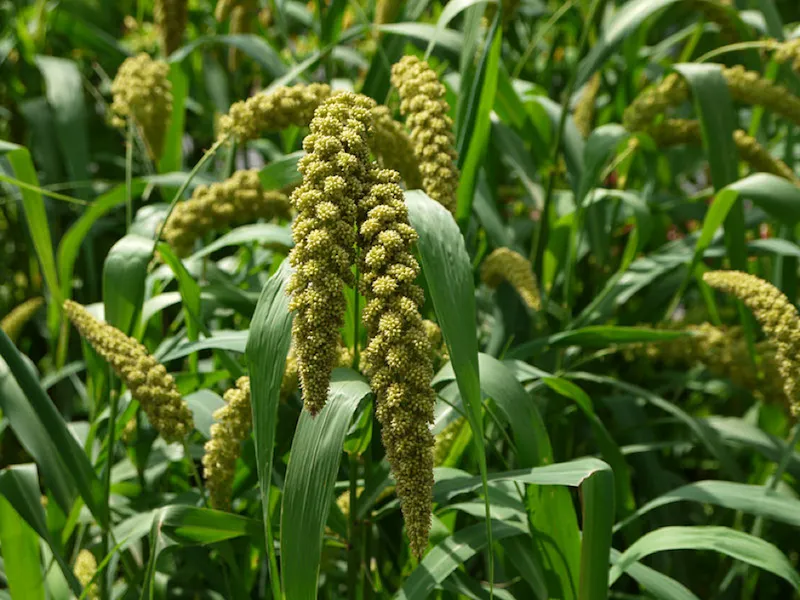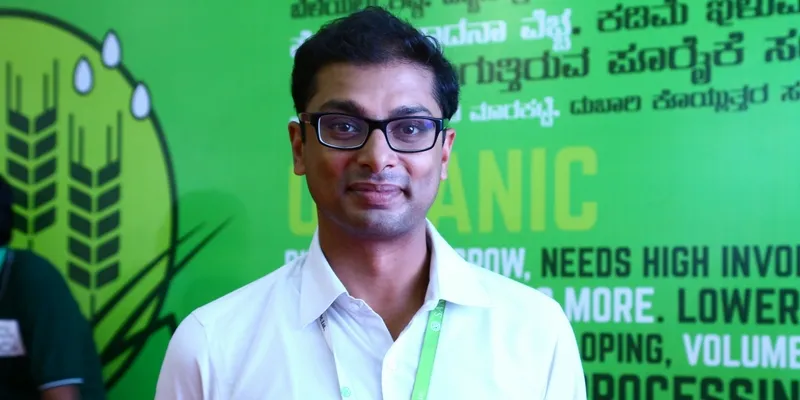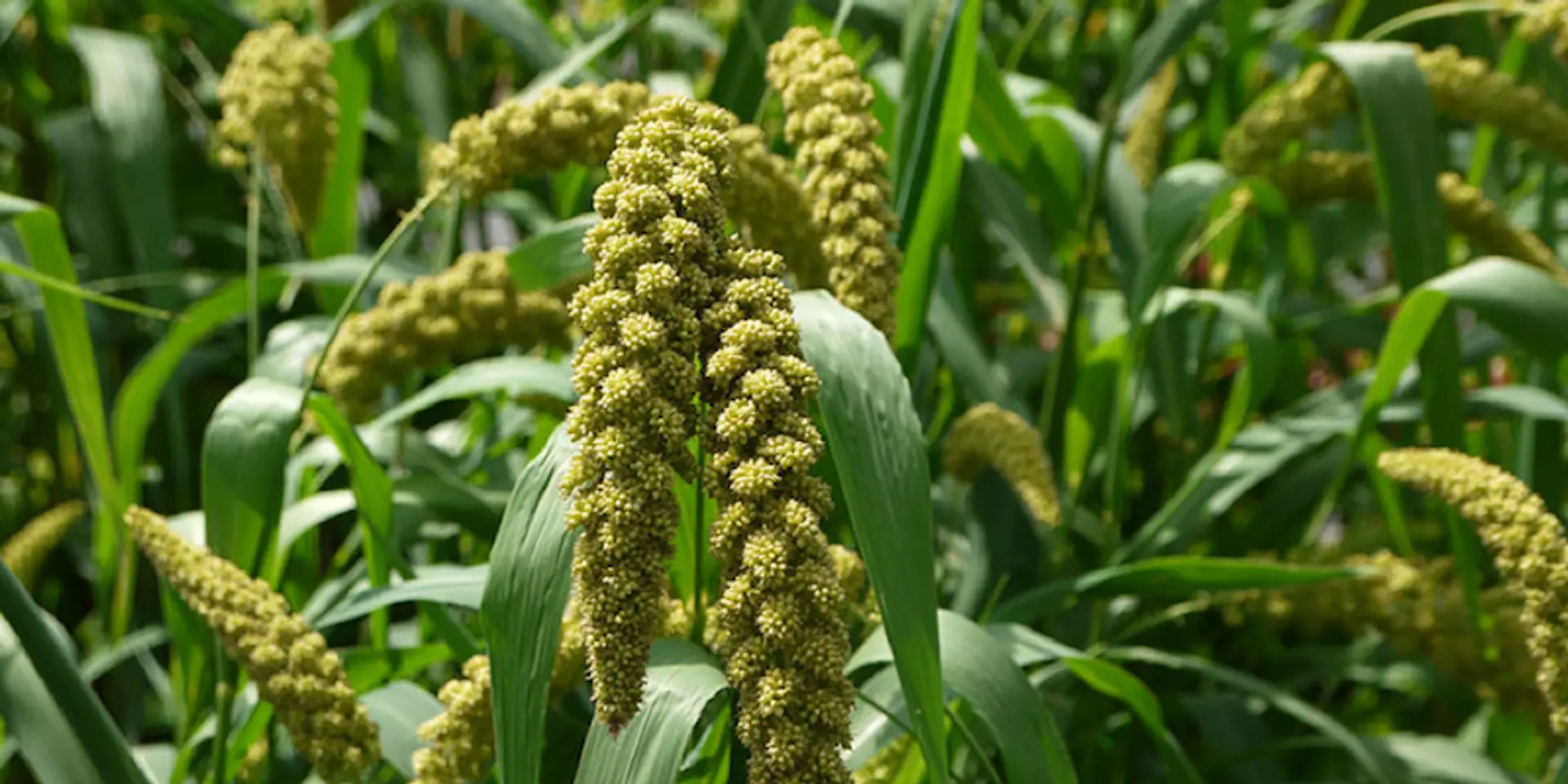Did you know organic farming and millets help restore soil ecosystem?
With climate change wreaking havoc on agricultural land through increased temperature and water shortage, and the chemicals used in conventional farming practices only compounding the problem, sustainable organic farming and millet cultivation is the last hope to produce food without destroying the environment.

The Green Revolution of the sixties heralded a new era for agriculture in India. The need for large-scale food production was met by using high-yielding varieties of wheat and rice and implementing modern farming methods, which entailed the extensive use of chemical fertilisers and pesticides.
While the movement helped India meet its high demand for food, the practices it popularised had a severe deteriorating impact on the environment. The use of chemicals and the rapid cultivation of successive crops, without giving the soil time to regenerate its nutritional quality, resulted in the poisoning of water bodies and the widespread destruction of agricultural land. In Punjab, the ceaseless cultivation of wheat, along with extensive use of chemical fertilizers to bolster crop yield, has spelled devastation for the State’s rivers and water reservoirs, several of which are so contaminated that their water cannot be used for any purpose. The same problem extends to the once fertile soil of the State, most tracts of which are now unfit for growing any crop.
This problem has taken a turn for the worse in recent years, with the effects of climate change being felt across the country. The sudden temperature increases and corresponding water shortages have impacted agricultural communities across the length and breadth of India. Successive heat waves have severely impacted the wheat production in Madhya Pradesh, recognised as the ‘wheat bowl’ of India. Meanwhile, the recent monsoon failure in the North-Eastern states of India has had a devastating effect on the farmers of the region, who mainly rely on rain-fed agriculture to grow their crops. In a similar vein, the water shortage of the Cauvery River resulted in the failure of around 70 percent of the crop being cultivated in the Thanjavur agricultural belt in Tamil Nadu.
These adverse effects of climate change aren’t restricted only to India, with many countries in Western Europe suffering crop failures due to the unpredictable fluctuations in seasons, according to Vikram Sankaranarayanan, an economist-turned-social entrepreneur and Managing Director of agro-company SanLak Agro-Industries.

With droughts becoming more commonplace in some of India’s most prominent agricultural regions, the country’s farmers need to adopt farming practices, which have the least impact on the environment while still producing a large enough quantity of crops to sustain their livelihood and the country’s food demand. That’s where sustainable organic farming and millets cultivation come into play.
Millets to the rescue
There are several reasons why millets are the crops that need to be cultivated in earnest today. They are climate-smart and can be grown in drought-hit, arid regions more successfully than any other crop. They also have an extremely low water footprint, with a crop of millets requiring around 80 percent less water than crops like rice, wheat, or sugarcane. Another, often overlooked, positive of cultivating millets is that they are excellent for soil preservation.
“Millets, as organic matter, are slow to break down in soil just as in our digestive systems,” Lynette Abbott, an emeritus professor at University of Western Australia’s Institute of Agriculture, tells YourStory. “Their slow composting nature helps in maintaining soil structure and retaining water, thus preserving soil health for extended durations.”

Another reason why millets are good soil preservers is their root network. “Millets, like most grasses, have a fibrous root network that helps maintain soil integrity due to its extensively branched nature,” explains Dr Abbott.
Integrating millets in existing agricultural practices
One cannot realistically expect all the farmers in the country to start cultivating only millets. Rice and wheat are an integral part of the Indian population’s staple diet, and replacing them entirely with millets is as impossible as it is foolhardy. Millets are, however, the ideal crop for cultivation during fallow periods—the time between the cultivation of one batch of crops and the sowing of the next. This is so because millets have a high tendency to form symbiotic relationships with mycorrhizal fungi, explains Dr Abbott. These fungi colonise the root system of the plant and provide increased water and nutrient absorption capabilities. Fungi can easily absorb phosphorous and nitrogen — two elements that are vital for a crop’s growth but are present in small quantities in soil during fallow periods.
There are, however, a few roadblocks that stand in the way of millet cultivation. For one, millets have a lower yield per hectare than rice and wheat, making them less profitable than those popular crops for farmers. Farmers in possession of fertile lands that receive steady rainfall, for instance, have no reason to start cultivating millets as that would just reduce their profits, explains Sankaranarayanan. The low floor price of millets, caused by low consumer demand, prevents farmers from taking up millet cultivation. This problem is currently being tackled by several institutions and State governments. For example, the Karnataka Department of Agriculture, led by its minister, Krishna Byre Gowda, is taking several measures to increase the awareness and demand of millets.
Sustainable organic farming
If cultivating millets is not always a practical option, is there an alternate way to prevent environmental damage occurring because of agriculture? Yes, there is: sustainable organic farming. Farming methods that do away with chemical fertilisers and pesticides while using water-conservative methods like drip-water irrigation and soil-friendly bio-fertilisers drastically reduce the negative impact of agriculture on the environment.
Realising its benefits, several States, in conjunction with research organisations, NGOs, and food companies, are taking active measures to promote organic farming practices by their farmers. For example, Institution for Cultural Research and Action (ICRA) works with around 5,000 farmers in four ‘eco-regions’ of Karnataka. By encouraging rain-fed organic farming, the organisation has helped generate a two-to-four-fold increase in total farm productivity in these regions. They also promote mixed cropping (where multiple crops are grown on one agricultural plot at the same time) to lower the investment costs and increase the crops' resilience against severe water stress.
Setting up and maintaining a sustainable farm does require more time and effort as compared to a conventional one. But the clear environmental benefits it entails, not to mention the healthiness of crops grown on these farms, makes sustainable farming a practice worth following, says a spokesperson for Vishaal Farm Fresh, a food producer and seller that grows all its produce on sustainable farms.
This positive mind-set has led to an explosive growth of organic farming in India, with the total area under organic cultivation recording a 90,000 hectare increase in the last decade alone, according to DV Sadananda Gowda, Minister of Statistics & Programme Implementation, Government of India.
“Organic farming and millet cultivation were common practices in India for millennia. But we’ve forgotten about them in the past few decades,” says Byre Gowda. “It’s time to reintroduce them to society.”







